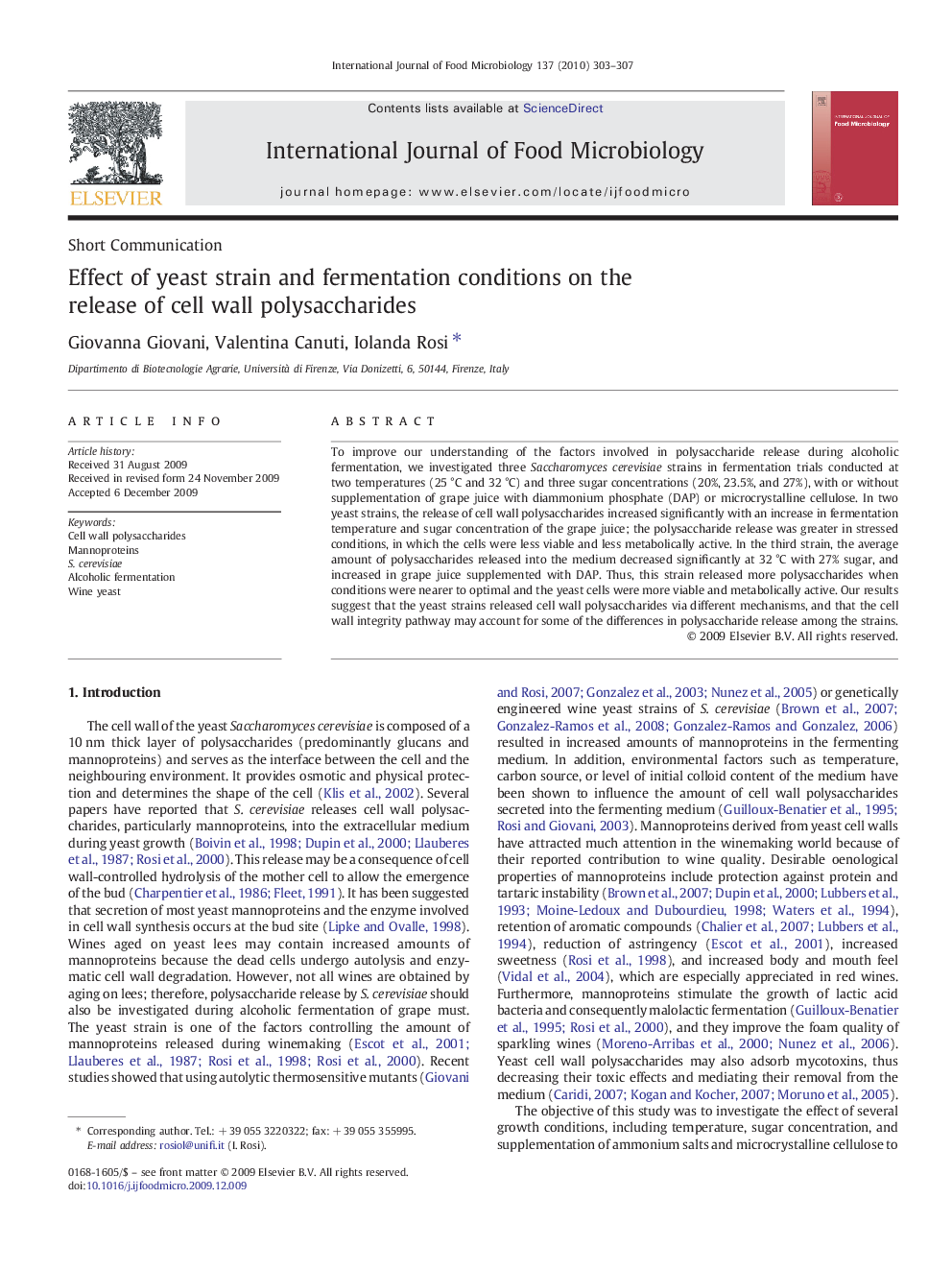| Article ID | Journal | Published Year | Pages | File Type |
|---|---|---|---|---|
| 4369115 | International Journal of Food Microbiology | 2010 | 5 Pages |
To improve our understanding of the factors involved in polysaccharide release during alcoholic fermentation, we investigated three Saccharomycescerevisiae strains in fermentation trials conducted at two temperatures (25 °C and 32 °C) and three sugar concentrations (20%, 23.5%, and 27%), with or without supplementation of grape juice with diammonium phosphate (DAP) or microcrystalline cellulose. In two yeast strains, the release of cell wall polysaccharides increased significantly with an increase in fermentation temperature and sugar concentration of the grape juice; the polysaccharide release was greater in stressed conditions, in which the cells were less viable and less metabolically active. In the third strain, the average amount of polysaccharides released into the medium decreased significantly at 32 °C with 27% sugar, and increased in grape juice supplemented with DAP. Thus, this strain released more polysaccharides when conditions were nearer to optimal and the yeast cells were more viable and metabolically active. Our results suggest that the yeast strains released cell wall polysaccharides via different mechanisms, and that the cell wall integrity pathway may account for some of the differences in polysaccharide release among the strains.
